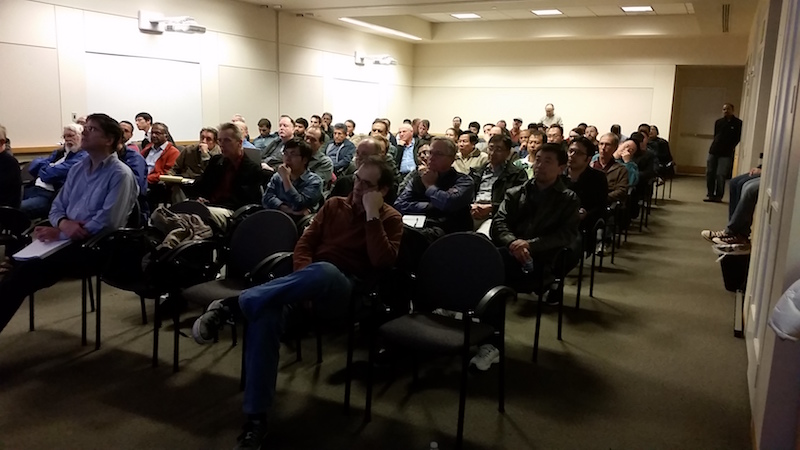| |
Click here for see the full list of upcoming events.
Tuesday, December 13, 2016
Super-resolution Image Reconstruction - Methods and Lessons Learned
This event is hosted/sponsored by IEEE SPS Chapter and co-sponsored by IEEE ITS & CS Chapters.
Speakers :
Prof. Sally Wood
Thomas J. Bannan Professor in Electrical Engineering, Santa Clara University
Location:
AMD Commons C-6/7/8, 991 Stewart Dr., Sunnyvale, CA (map or Google Maps)
Schedule:
6:30pm: Networking/Light Dinner
7:00pm: Announcements
7:05pm: Presentation
8:15pm: Adjourn
Cost:
Free. Donation accepted for food.
Abstract:
Although there is some variation in the interpretation of the term "super-resolution" in different imaging application contexts, for computational methods it typically refers to the use of multiple images acquired at a low spatial resolution to compute a single image with increased spatial resolution. The motivation for this may be to improve the perceptual quality of the image content or to derive more accurate information from the image content such as the location of features. This may be attractive in situations where a higher resolution camera can not be used because of size or cost for example. A potential application, which may be fixed or mobile, is monitoring and surveillance. The additional information used to improve the spatial resolution may be some combination of a-priori assumptions and multiple passively acquired images in which the desired high frequency information is present, but aliased. Performance measures of super-resolution algorithms may be based on measures of image accuracy, measures of image quality, computational efficiency, or robustness in the presence of measurement noise and image acquisition model error. While computational efficiency is relatively unambiguous, the metrics for accuracy and robustness may be debated. This talk will provide an introduction to super-resolution methods and applications, explore the effects of noise and model error on resolution improvement, describe one specific project application, and discuss general lessons learned.
Biography:
Sally Wood received the Ph.D. in electrical engineering from Stanford University in 1978. Driven by interest in the electrophysiological basis of perception, she also received a minor in psychology. Currently she is the Thomas J. Bannan Professor in Electrical Engineering at Santa Clara University, where she has been a member of the faculty since 1985 and has served three terms as department chair. She is a fellow of the IEEE, and her academic research in signal and image processing has included computational imaging, super-resolution, image reconstruction from projection measurements, three dimensional modeling from image data, and adaptive signal processing for medical and communications applications.
Prior joining the faculty at Santa Clara University, Dr. Wood worked in research and development in medical imaging, neural systems modeling, and development of automatic reading systems at Contour Medical Systems, the Palo Alto Veterans Administration Rehabilitation Engineering Research and Development Center, and Telesensory Systems. From 2008 to 2010 she served as a program director at the National Science Foundation in the Engineering Directorate's Division of Engineering Education and Research Centers. Dr. Wood serves as a member of the editorial board for the Proceedings of the IEEE and has chaired a number of IEEE medal selection committees. She has served as VP of Awards and Membership for the Signal Processing Society and a member of the board of governors for both SPS and EMBS. She is the recipient of a 1984 Presidential Young Investigator Award. In 2009 she received the ASEE Electrical and Computer Engineering Division Distinguished Educator Award.
Slides (PDF)


Subscribe to future announcements: link
|